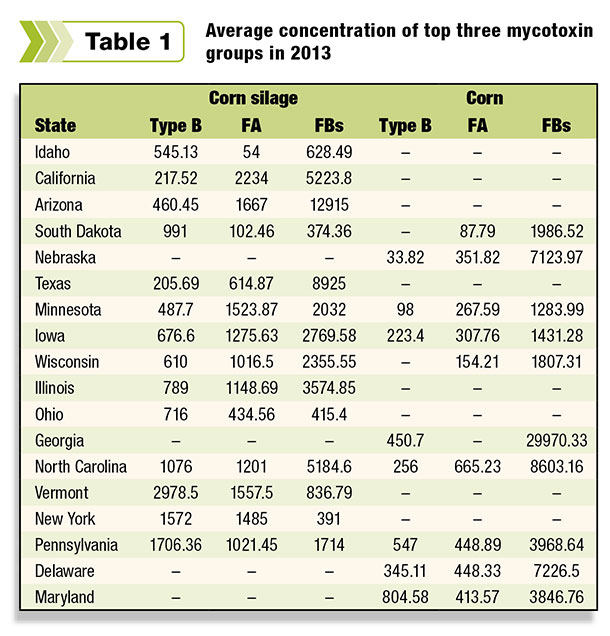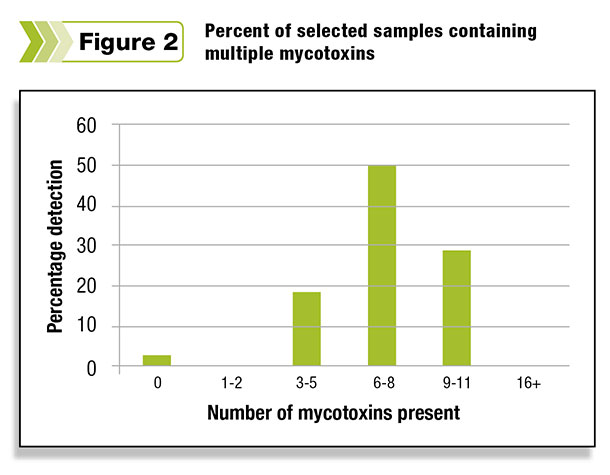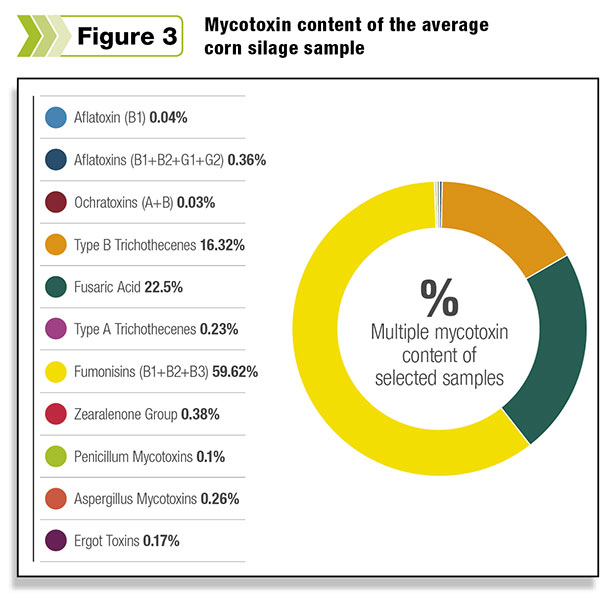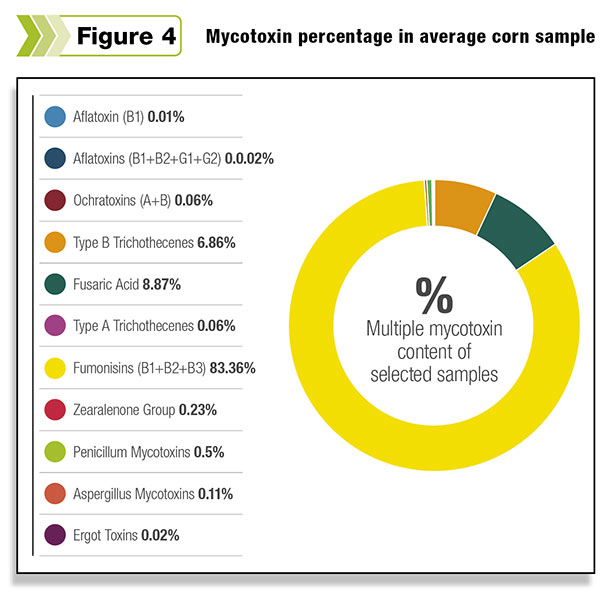The Harvest Analysis North America (HANA) survey done by Alltech tested 101 samples from across the U.S. and Canada and demonstrated the need for a mycotoxin management program to monitor the effects of toxins on beef cattle throughout 2014.
Despite more rainfall across the cornbelt and yields pushing record production, farmers must consider the quality rather than quantity.
Quality does not only include nutritive value but also the presence and levels of mycotoxins in this year’s crop.

Samples sent in from across the U.S. and Canada show that corn silage yields and corn grain tested positive for multiple mycotoxins (Figure 1).
This follows what is being observed in that a higher percentage of feeds and feedstuffs are contaminated with multiple mycotoxins.

The breakdowns for corn silage and corn (Figure 2 and 3) are almost identical in that fumonisin is the most prominent mycotoxin and is followed by fusaric acid and type B trichothecenes.

Beef cattle can tolerate a great deal of fumonisin in corn silage and corn. The guideline limits for fumonisin are 20,000, 40,000 and 60,000 for low, moderate and high risk.
Although the average samples for 2013 corn silage and corn are not this high, they will still have negative effects, particularly in younger and starter calves that do not have fully developed immune systems.
Fumonisins will lower immune response in these cattle and lead to a higher incidence of opportunistic infections with poorer treatment responses.

Type B trichothecenes are present at low-risk levels in both corn silage and corn grain in the average sample and may be considered at safe levels by many producers.
However, the second-most prevalent mycotoxin is fusaric acid, and fusaric acid will act synergistically with DON to magnify the effects of DON.
In other words, what appears to be a relatively safe, low-risk level of type B trichothecenes may be elevated to a moderate risk by fusaric acid.
This effect will be manifested as lower dry matter intake, decreased rate of gain, gut irritation and lowered immune response.
Many times, it is not an acute case that can be readily identified but a chronic situation associated with the ingestion of a low level of mycotoxins over an extended period of time.
This results in a wide array of subclinical symptoms that slowly reduce performance and eat away at the producer’s bottom line and compromise herd health.
Altered reproductive performance
Reproductive performance that has been altered due to the negative effects of molds and mycotoxins may manifest itself in a variety of ways.
Look for the following indicators in a population of cows and heifers:
- Irregular cycles
- Repeat breeders
- Non-breeders
- Nymphomaniac cows
- Excessive cases of early embryonic mortality
- Constant vaginal discharges
- Animals that do not exhibit signs of heat
- Abortions
Mycotic abortions may be caused by toxin-producing molds such as the aspergillus spp. or by the non-toxin- producing mold known as mucor spp.
Abortions associated with these two molds are generally second-trimester and third-trimester abortions.
The mucor molds are basically storage molds and are relatively harmless at low levels, but at high levels are abortive in nature.
They grow well in stored feedstuffs, including dry hay. Feeds that are moldy and musty-smelling should be discarded.
Poor reproductive performance in some cases may be a result of grazing pastures containing endophyte-infected fescue (fescue toxicity).
Poor reproductive performance may be accompanied by weight loss, decreased feed intakes, lack of blood flow to extremities and a rough, dull hair coat giving the animal a very unthrifty appearance.
Mycotoxicosis observations
Mycotoxins are capable of affecting every organ in the body depending on the toxin or combination of toxins present in the diet.
The immune system is often down-regulated due to the inhibition of RNA and DNA synthesis in the body. An increase in the incidence of disease challenges within a herd should lead one to the examination of feedstuff quality.
In cases where the immune system has been challenged by a bacterial infection (i.e., salmonella, E. coli, etc.), animals will generally not respond well to veterinary therapy.
Alltech’s program measures the presence and levels of more than 37 mycotoxins in a sample.
The analysis also generates a risk equivalent quantity, REQ, to illustrate the risk from all of the mycotoxins present to health, performance and immune response.
The REQ value for corn silage is at high risk, and for corn, moderate. It must be kept in mind that these are ingredients, and their inclusion rates will determine their mycotoxin contribution to the TMR.
Producers should be aware that the findings from the HANA survey are for corn silage and corn samples at harvest.
They do not reflect what will happen during ensiling or storage. It has been shown from the previous HANA surveys that the numbers and concentration of mycotoxins will increase over time during storage. ![]()
Dr. Max Hawkins holds a doctorate in animal science from the University of Tennessee and currently serves as a nutritionist on the Alltech Mycotoxin Management Team.
Nutritionist
Alltech







